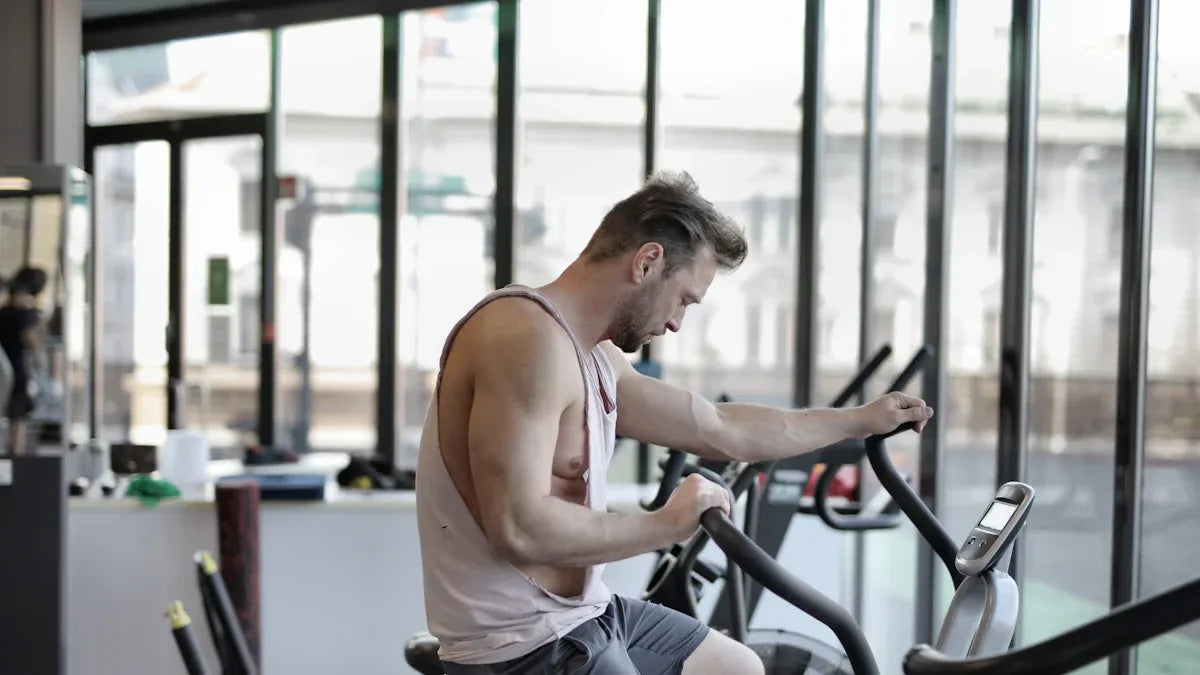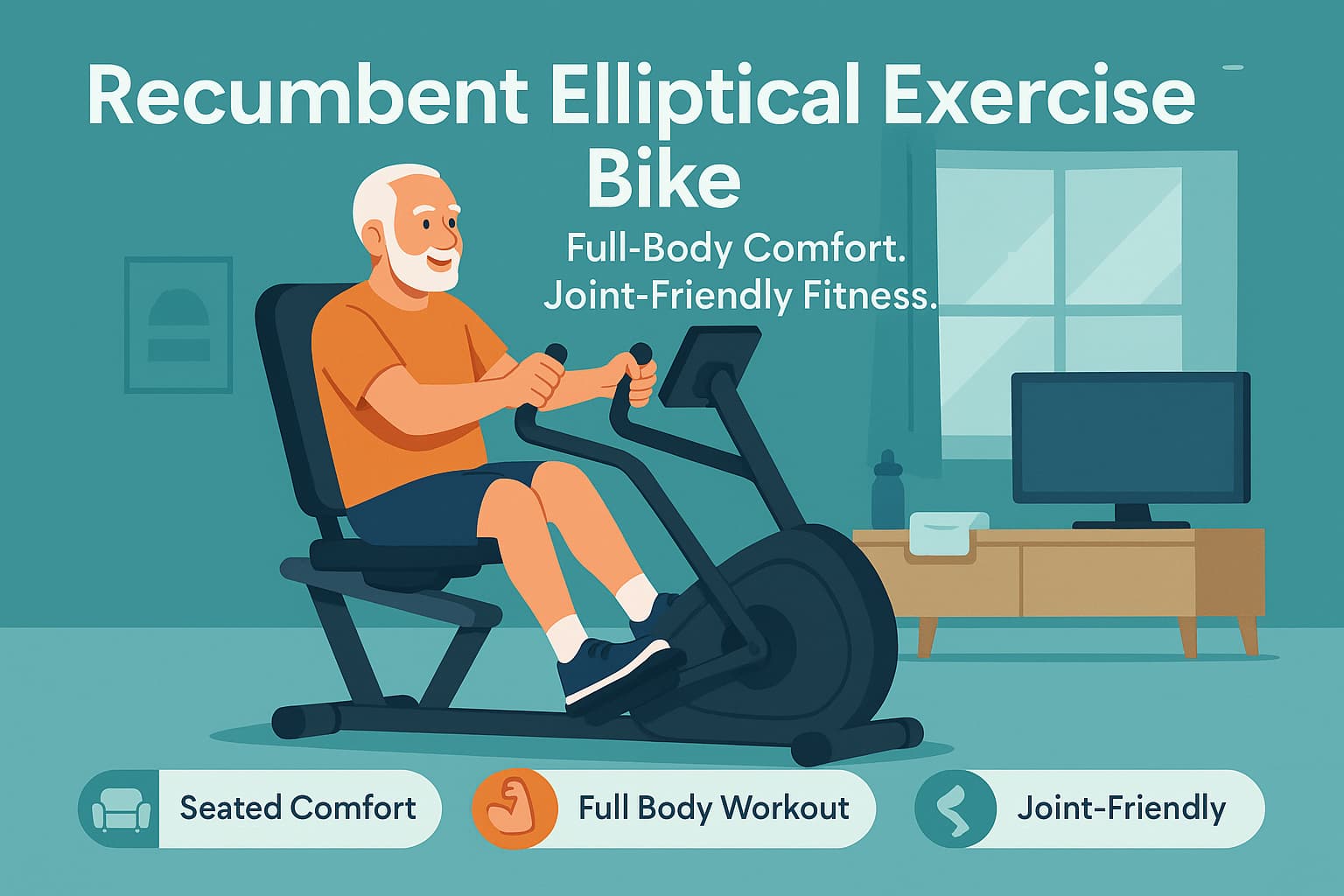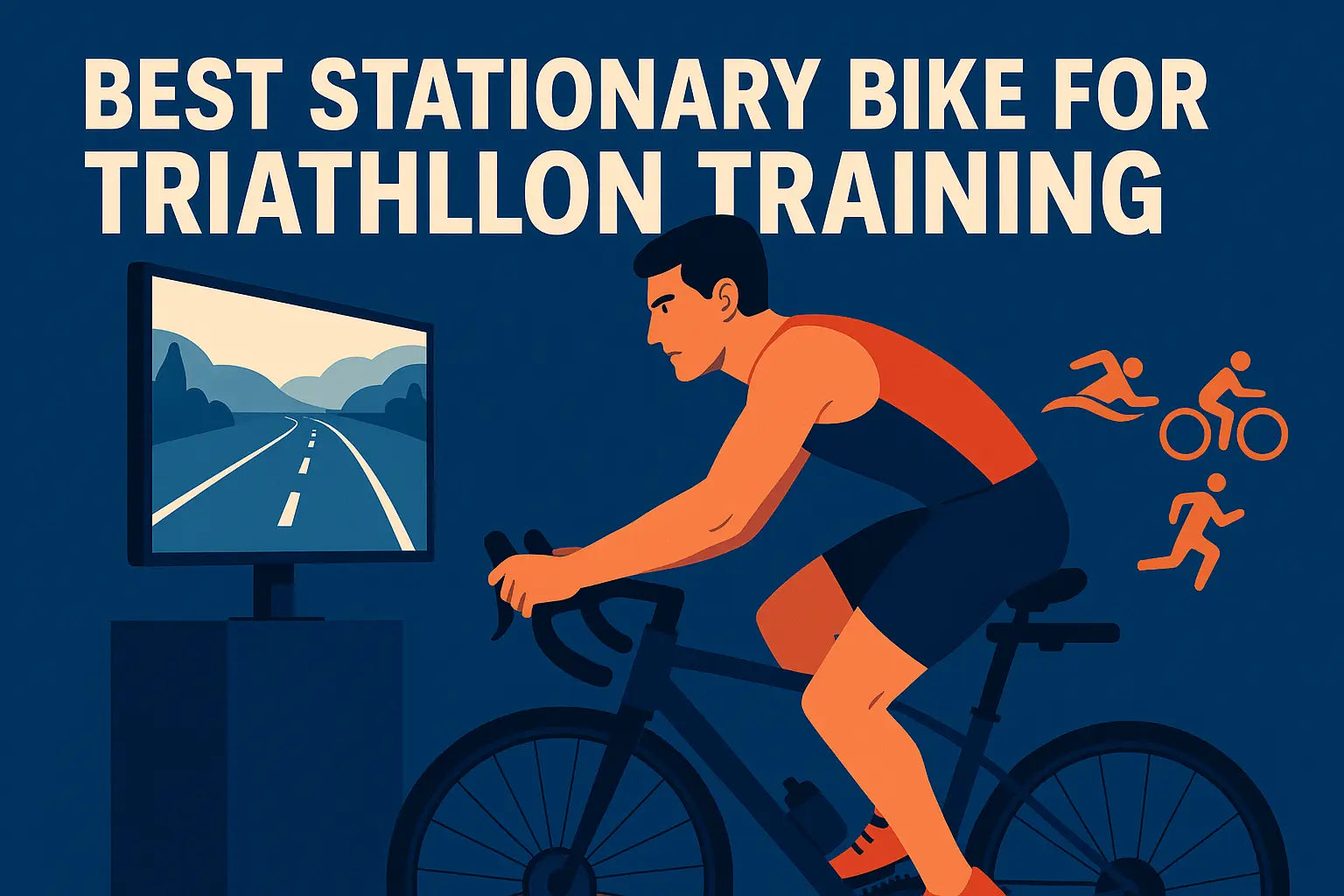If you want to feel comfortable and supported, a recumbent bike may be best for you. If you want to burn more calories and use more muscles, an upright bike can give you a harder workout. Here are some quick facts:
-
In 2023, more people picked recumbent bikes for home because they are comfy and easy on the body.
-
Upright bikes are still liked for hard workouts and using more muscles.
|
Feature |
Recumbent Bike |
Upright Bike |
|---|---|---|
|
Comfort |
Big seat, has back support |
Small seat, less back support |
|
Joint Impact |
Low, gentle on joints |
Higher, can hurt joints |
|
Calorie Burn |
Works well, usually less |
More, uses more muscles |
|
Muscle Engagement |
Works lower body most |
Uses core and upper body too |
|
Safety |
Easy to get on, very steady |
Needs balance, not as steady |
Think about how fit you are and what feels good for you. You get to choose which bike fits your needs and goals!
Key Takeaways
-
Pick a recumbent bike if you want comfort and support. It is good for people with joint pain or back problems.
-
Choose an upright bike if you want a harder workout. It helps you burn more calories and use more muscles.
-
Think about your space before you buy a bike. Upright bikes need less room. Recumbent bikes need more space on the floor.
-
Make clear fitness goals before you choose a bike. This helps you pick the right one for weight loss, rehab, or fitness.
-
Make sure your bike fits you well. This stops discomfort and makes your workout better.
Main Differences
Design and Position
When you look at these bikes, you notice the difference right away. A recumbent bike has a big seat and lets you lean back. You sit low to the ground with your legs stretched out in front of you. This design gives you more comfort and support, especially if you have lower back pain. Upright bikes look more like regular outdoor bikes. You sit higher up, and your body leans forward. This position makes your core and upper body work harder. You use more muscles, and your heart rate goes up faster. Fitness experts say that upright bikes help you burn more energy because you use more muscle groups at once. If you want a workout that feels like riding a real bike, the upright style might fit you best.
Comfort Level
You want to feel good during your workout, right? Here’s how each bike helps with comfort:
-
Recumbent bikes give you a large, padded seat with back support. Your lower back feels less pressure, and your spine stays happy.
-
The way you sit on a recumbent bike keeps your knees and hips in a natural position. This means less strain on your joints.
-
If you have joint pain or you’re recovering from an injury, a recumbent bike feels gentle and safe.
-
Upright bikes make your core and arms work, but they can be tough if you have joint problems.
Tip: If you want a low-impact workout that feels easy on your body, try a recumbent bike first.
Space and Options
Think about where you want to put your bike. Upright bikes usually take up less space. They fit well in small rooms or apartments. Recumbent bikes are bigger because of the long frame and wide seat. You need more floor space for them. Both types come in many styles. You can find simple bikes or ones with screens, programs, and heart rate monitors. Some upright bikes even fold up for easy storage. Before you buy, check your space and decide what features matter most to you.
Recumbent Bike: Comfort and Support

Back and Knee Benefits
You might notice your body feels better when you use a recumbent bike. The large seat and back pad support your weight, so your hips and core do not get tired quickly. You can sit back and relax while you pedal.
Due to the reclined position of the seat on a recumbent bike, your back does not feel any strain at all as you work out.
If you have knee pain or joint problems, this bike can help. Many studies show that cycling in a reclined position reduces stress on your knees. Your joints move smoothly, and you do not feel sharp pain. Here is what research found:
|
Study Focus |
Findings |
|---|---|
|
Knee Pain Relief |
Cycling in a recumbent position reduces compressive and shear forces across the knee joint, promotes synovial fluid circulation, and strengthens surrounding muscles, leading to pain relief. |
|
Osteoarthritis |
A systematic review in Clinical Rehabilitation indicates that recumbent biking significantly reduces pain and improves joint function in individuals with knee osteoarthritis. |
You get a gentle workout that helps your knees and back feel stronger.
Seated Position
The way you sit on a recumbent bike makes a big difference. You lean back in a reclined seat, and your legs stretch out in front of you. This position feels natural and keeps your spine straight. You do not have to hunch over or grip handlebars tightly.
-
Supportive backrest
-
Ergonomic design
-
Gentler on joints
A properly adjusted seat lets you pedal longer without getting tired. You stay comfortable, so you can focus on your workout. If your seat feels wrong, you might get sore or want to stop early. Make sure you set up your bike before you start.
Lower Body Focus
When you use a recumbent bike, your lower body does most of the work. Your thighs, calves, and glutes push the pedals. You build strength in your legs and improve your endurance.
Check out how your muscles work during a ride:
|
Muscle Group |
Recumbent Activity (%) |
Upright Activity (%) |
|---|---|---|
|
Rectus Femoris |
22 |
Higher |
|
Semitendinosus |
26 |
Similar |
|
Tibialis Anterior |
24 |
Similar |
|
Medial Gastrocnemius |
34 |
Similar |

You get a solid lower body workout without hurting your joints. If you want to build leg strength and keep your knees safe, this bike is a smart choice.
Upright Bike: Intensity and Engagement

Muscle Groups Worked
When you hop on an upright bike, you use more than just your legs. Your whole lower body gets involved. The main muscles you work include your quadriceps, glutes, hamstrings, hip flexors, and calves. Your quadriceps, especially the rectus femoris, do a lot of the work as you push the pedals down and pull them back up. Your glutes help you extend your hips, giving you power with every stroke. The gluteus medius and minimus help your hips rotate and move smoothly.
You might notice your legs feel tired after a tough ride. That’s because upright bikes make your muscles work harder than recumbent bikes. You also use your hip flexors and calves to keep the pedals moving. This full lower-body workout helps you build strength and endurance.
Upright bikes engage a wider range of muscle groups, including your core and upper body, leading to a more comprehensive workout.
Calorie Burn
If you want to burn more calories, the upright bike is a great choice. You sit higher and lean forward, which makes your heart beat faster. Your body works harder, so you use more energy. This means you can burn more calories in less time compared to a recumbent bike.
A study in the Journal of Applied Physiology found that upright cycling leads to higher oxygen use, heart rate, and energy burn than recumbent cycling. When you pedal faster or add resistance, you push your body even more. This helps you reach your weight loss or fitness goals quicker.
Here’s why upright bikes help you burn more calories:
-
They offer a more intense workout, perfect for weight loss and building cardiovascular fitness.
-
You use more muscles at once, which means your body needs more energy.
-
High-intensity workouts on upright bikes lead to greater calorie burn.
Tip: If you want to maximize your calorie burn, try interval training on your upright bike. Pedal hard for a minute, then slow down for a minute. Repeat this pattern for a powerful workout.
Core and Upper Body
You might think cycling only works your legs, but upright bikes challenge your whole body. When you ride, your core muscles—your abs, back, and pelvis—work to keep you balanced and steady. If you stand up while pedaling, your core works even harder to help you stay upright.
-
Cycling involves full-body engagement, not just your legs.
-
Your hip flexors and extensors, which are part of your core, play a big role during cycling.
-
When you ride out of the saddle, your core muscles help you balance and control the bike.
Your upper body also gets involved. You grip the handlebars, which makes your arms, shoulders, and chest work to keep you steady. The core acts as a bridge, helping you transfer power from your legs to your upper body. This makes your workout more effective and helps you build strength all over.
Note: Maintaining an upright position while pedaling takes effort from your abs, back, and pelvis. This helps you improve your balance and stability every time you ride.
With an upright bike, you get a workout that challenges your muscles, burns more calories, and helps you build a strong, balanced body.
Safety and Stability
Risk of Injury
When you think about safety, you want to know which bike keeps you safer. Recumbent bikes and upright bikes both have their own risks. Upright bikes put you in a higher position, so you need to balance more. If you have trouble with balance, you might feel wobbly or even fall. Recumbent bikes sit lower to the ground and have a wide base, so you feel steady and secure. This makes them a good choice if you worry about falling or have joint pain.
No matter which bike you choose, regular maintenance keeps you safe. Here’s a simple checklist:
-
Inspect pedals and cleats daily.
-
Clean high-use areas and check the power cord.
-
Listen for odd noises.
-
Check hardware and clean the bike weekly.
-
Adjust the saddle and handlebars monthly.
-
Inspect resistance and adjustment knobs yearly.
Balance and Accessibility
You want a bike that feels stable and easy to use. Recumbent bikes give you a wide base and a low step, so you can get on and off without trouble. The reclined seat supports your back and keeps your joints happy. This design lowers your chance of falling, which is great if you have mobility issues or are just starting out.
Upright bikes need you to sit up straight and balance more. If you have strong balance, you might enjoy the challenge. If you feel shaky, though, you might prefer the steady feel of a recumbent bike. Adjustable settings, a stable frame, and a wide base all help you feel safe during your workout.
Recumbent bikes work well for seniors, people with joint pain, or anyone who wants extra support. Upright bikes suit those who want a more traditional ride and can handle a bit more balancing. Choose the bike that matches your comfort and confidence level. 🚲
Choosing the Right Bike
Weight Loss Goals
If you want to lose weight, you should think about calories burned. Upright bikes help you burn more calories quickly. You use more muscles, so your heart beats faster. Look at this table to see the difference:
|
Weight (lbs) |
Calories Burned in 30 Minutes (Upright Bike, Moderate) |
Calories Burned in 30 Minutes (Recumbent Bike, Moderate) |
|---|---|---|
|
125 |
210 |
170 |
|
155 |
260 |
210 |
|
185 |
311 |
252 |

Some people like recumbent bikes because they feel more comfy. Anna, age 52, lost 25 pounds using a recumbent bike after knee surgery. Jake, age 34, used an upright bike for hard workouts and lost 15 pounds in two months.
Rehabilitation Needs
If you are healing from injury or surgery, comfort is very important. You need a bike that lets you move without pain. Many therapists say bikes with big seats and backrests help most. You can exercise at home, which helps you stay motivated. The semi-reclined seat keeps your hips steady and lowers stress on your knees. You feel safe and supported while you get stronger.
-
Pedals placed to protect your knees
Seniors and Beginners
Are you new to working out or worried about joint pain? You may want a bike that feels safe and easy. Therapists say seniors need comfort and seats that adjust. You can start with low resistance and make it harder as you get stronger.
Recumbent bikes have wide seats with a back rest, and the pedals are in front of you. They are more steady and comfy, so they work well for people with balance or movement problems.
-
Recumbent bikes are good for chronic pain, arthritis, back pain, joint replacements, spinal issues, pregnancy, or stroke recovery.
-
They give gentle movement and good support, which helps lower pain and strain.
Athletes
If you want a hard workout, upright bikes give you more challenge. You use your core and upper body, and you burn more calories. Upright bikes are great for athletes who train for speed or hills. The upright seat feels like riding a real bike outside. You get a full-body workout and make your heart stronger.
-
Upright bikes use more muscles and help you train harder.
-
Recumbent bikes work your lower body and are better for athletes with joint problems.
Quick Tips
Assess Your Needs
You want a bike that feels right for your body and your workout style. Start by thinking about your comfort. A proper bike fit makes a huge difference. When your bike matches your musculoskeletal needs, you pedal easier and stay safe. Adjust the seat height so your legs move smoothly. If your legs are different lengths, you may need extra tweaks. Try to align your bicycle cleats if you use clipless pedals.
Tip: A bike that fits well helps you avoid pain and keeps your rides fun.
Here are some things you can check before you pick a bike:
-
Make sure the saddle height feels good for your knees.
-
Test different models to see which one supports your back.
-
Choose a bike that matches your riding style, like gentle exercise or intense training.
-
Look for a wide seat if you want more comfort.
-
Ask a bike-fit certified physical therapist for help if you feel unsure.
You can also adjust the frame, handlebars, and seat to match your body. Small changes can make a big difference in how you feel during your workout.
Set Your Goals
Think about what you want from your bike workouts. Do you want to lose weight, build muscle, or recover from an injury? Your goals help you decide which bike works best for you. If you want a gentle ride, a recumbent bike gives you comfort and support. If you want to push yourself, an upright bike helps you burn more calories and work more muscles.
Setting clear goals keeps you motivated and helps you track your progress.
Here’s a simple way to set your goals:
-
Write down what you want to achieve, like “ride 20 minutes a day” or “lose 10 pounds.”
-
Pick a bike that matches your goal, whether it’s comfort or intensity.
-
Adjust your workout plan as you get stronger or your needs change.
🚴♂️ Remember, the best bike is the one that helps you reach your goals and keeps you coming back for more!
Here’s a quick look at how recumbent and upright bikes compare:
|
Feature |
Recumbent Bike |
Upright Bike |
|---|---|---|
|
Comfort |
Big seat, back support |
Smaller seat, less support |
|
Intensity |
Great for easy rides |
Good for hard workouts |
|
Joint Impact |
Gentle on joints |
May stress joints more |
|
Muscle Engagement |
Focuses on legs |
Works legs, core, and arms |
|
Safety |
Very stable and easy to use |
Needs more balance |
You know your body best. Try different bikes, think about your goals, and pick the one that feels right. Your perfect ride is the one that keeps you moving and smiling! 🚴♀️
FAQ
Can you lose weight using a recumbent bike?
Yes, you can lose weight with a recumbent bike. You burn calories while you pedal. If you ride regularly and watch your diet, you will see results. Many people find the comfort helps them stick with their workouts.
Is an upright bike harder on your joints?
Upright bikes can put more stress on your knees and hips. If you have joint pain, you might feel discomfort. You can lower the resistance or try a recumbent bike for a gentler ride.
Which bike is better for beginners?
Recumbent bikes work well for beginners. You get a big seat and back support. You feel safe and steady. Upright bikes need more balance and may feel tough if you are just starting out.
Do both bikes help build leg muscles?
Both bikes help you build leg muscles. You work your thighs, calves, and glutes. Upright bikes also use your core and upper body, so you get a more complete workout.
Can seniors use upright bikes safely?
Seniors can use upright bikes, but they need good balance. If you worry about falling or have mobility issues, a recumbent bike gives you more stability and support. Always check with your doctor before starting a new exercise.
Latest Articles






